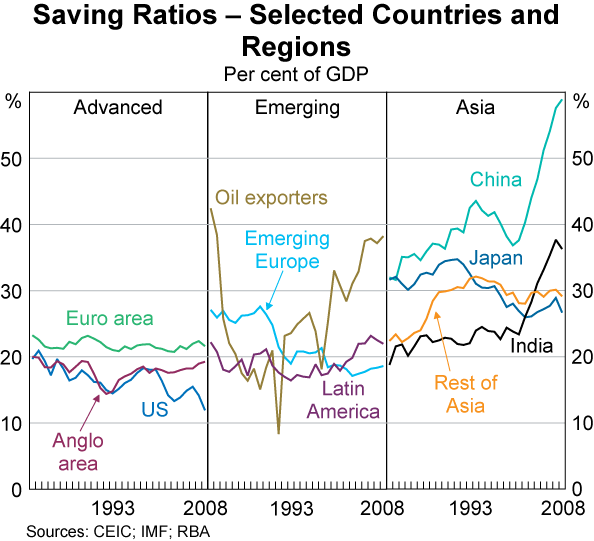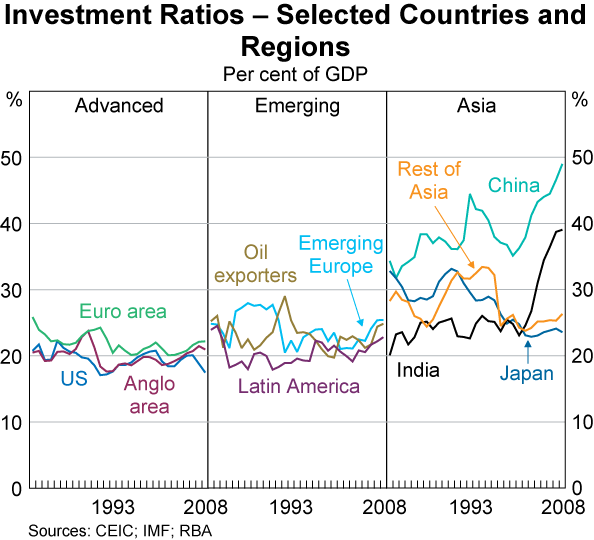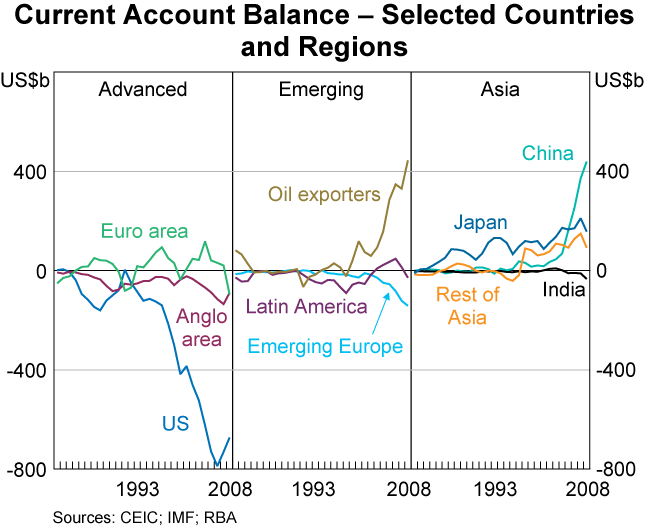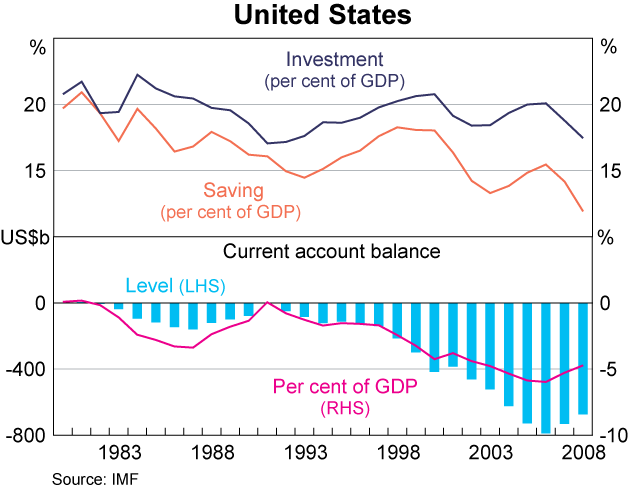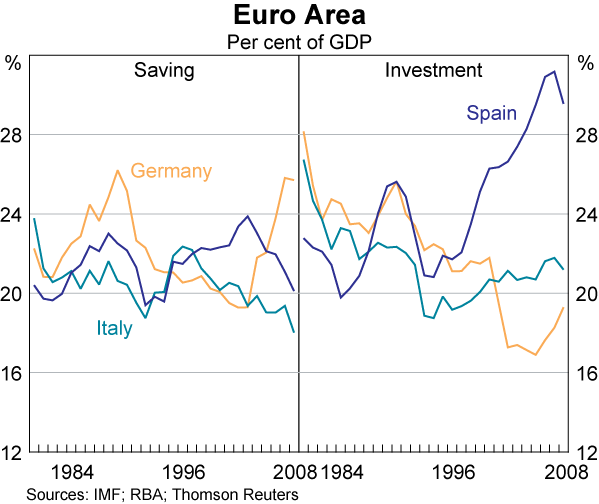The September edition of the Reserve Bank of Australia’s “Reserve Bank Bulletin” has an excellent article titled “Patterns and Trends in Global Saving and Investment Ratios”. The article compares saving and investment ratios of different countries and regions and their impact on the current deficits.
In this post, let me present some of the key points from the article. Saving and investment ratios tend to vary across regions and countries. Traditionally Asian countries have had high saving ratios. In recent times, the investment ratios of Asian countries is also tending higher as shown in the graph below.
China and India are among the top savers in the world. India’s saving accounts for over 35% of GDP. For China, it is close to 60%. Developed countries have low saving ratios. The United States has the lowest saving ratio in the developed world. In addition to high Saving ratio, the Chinese have high investment ratio as well.
In Asia, saving ratios traditionally exceeded investment ratios producing a large current account surplus. China has run a current account surplus since 2000. Oil exporting countries in the Middle East and Russia also have current account surplus. These countries supply their global saving to developed countries. The advanced economies historically have run current account deficits. Since the early 90s, the current account deficit has increased sharply in US.
On the development in saving and investment ratios in the U.S., the article noted:
“As noted, the current account deficit in the United States widened sharply between the late 1990s and mid 2000s as the saving ratio fell – with a large decline in public saving in particular – while its investment ratio was boosted by a rise in housing construction. But since the mid 2000s, the US investment and saving ratios have changed by a broadly similar magnitude, and hence the US current account has been comparatively steady.” This analysis is absolutely correct since residential construction was one of the major drivers of the US economy until a few years ago. Large and small banks handed out loans liberally for investment purposes in the real estate sector. While that strategy boosted profits in the short run and increased the investment ratio for a few years, the negative effects of that reckless lending is being felt on a daily basis in the US. For example, the total number of failed banks has risen to 94 as of last Friday.
The effect of rise in construction spending leading to high investment ratio is evident in Spain as well as the chart below shows. The chart also shows that since the 1990s Germany has had a high saving ratio but low investment ratio.
The article concludes that declining domestic demand and tight financial conditions will lead to a sharp fall in investment in the U.S. Globally the economic downturn is projected to lead to a decline in saving and investment ratios in major countries and regions.
